With so many diets these days it’s making it hard to know which foods are legitimately the right ones to eat.
The definition of healthy carbs for me, are ones that provide long lasting steady energy, don’t raise blood sugar levels, are higher in fibre, and generally contain more essential minerals and vitamins.
My goal is to help you decide on the right carbs to eat by supplying you with nutritional facts on the different carbs out there and what their benefits are. From there you can decide for yourself what your favourites are.
Carbohydrates are essential to a well balanced diet, and so because of this they shouldn’t be avoided but rather limited and eaten at strategic times.
The best times to eat carbs from my experience has been in breakfast recipes, before a workout, after a workout, and lastly whenever my beautiful body demands it.
You see, denying yourself from carbs is what usually encourages binges later on. So you must always listen to your bodies needs.
There are two types of carbs. Processed carbs and unprocessed carbs. Also known as refined carbs and unrefined carbs. Unprocessed (unrefined) carbs are the healthiest form of carbohydrate because it’s essentially the grain in it’s most natural form. The benefits of eating whole grains is they contain truck-loads of fibre, minerals and vitamins. And as a result of the fibre and minerals, it keeps your blood sugar level stabilized thus preventing you from sugar spikes and crashes like processed (refined) carbs do. Unprocessed carbs also increase your chances of weight loss and healthy weight managements, which is why they’re highly recommended for people who suffer from obesity and overeating.
Processed carbs are whole-grains that have been processed by either man or machine, before reaching your plate. The processes include stripping all the fibres from the grain, which includes all its vitamins and minerals and instead adding sugar, fats, salts and preservatives so it’s more palatable and longer lasting. As a result you’re literally left with no nutritional benefits! It’s when you consume large amounts of these carbs that you gain weight, trigger inflammation and get blood sugar imbalances.
Did you know processed carbs were actually created all the way back in 1800. It was invented so flour could last longer on shelves, unlike 100% natural whole-grains, which turn rancid after a few days. This was also the start of many health problems.
Carbs are not just found in grains, but also in seeds, vegetables, legumes, and nuts. This means we’re consuming enough carbs without needing to touch any grain or gluten. And so because I feel better eating no gluten or grains, I have discovered the 4 best grain-free carb sources you can choose next time you’re shopping over grain.
4 Best Carbs Source You Should Be Eating On A Healthy Diet:
Buckwheat
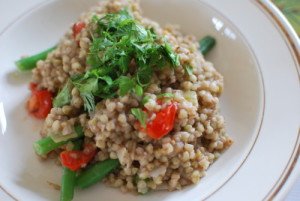
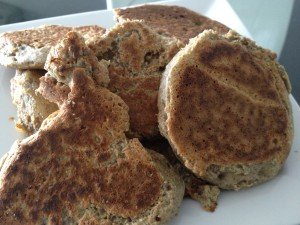
Buckwheat is actually a seed and not wheat as its name suggests. Its minerals are high in iron, zinc, and selenium. Buckwheat is relatively high in protein and contains all 8 essential amino acids, making it a healthy protein source for vegans and vegetarians.
Buckwheat is also very high in fibre, which is why it is a super healthy carb to consume. Buckwheat is also high in antioxidants such as rutin, tannins, and catechin-7-O-glucoside. And so for that reason buckwheat is great for people with high blood pressure, obesity, type 2 diabetes, and IBS as it’s very gentle and easy to digest. Buckwheat is not a grain and it contains no gluten, making it gluten free!
In a 100g serve buckwheat contains: 343 calories, 72g carbs, 10g fibre, 13g protein, and 3.4g of Fats.
A recommended serving size is ½ cup of cooked buckwheat and that contains just 77.5 calories, 16.5g carbs, 2.5g fibre, 1g sugar, 3g protein.
Buckwheat is best served in winter time because it makes a perfectly warming meal. You could use it to make a delicious warming buckwheat porridge made with unsweetened almond milk, soaked almonds and seeds.
Buckwheat is also great grounded into a flour to make delicious buckwheat pancakes for breakfast.
Occasionally I enjoy in some a serve of cooked buckwheat with stevia and cinnamon before a workout. It provides me with a good source of carbs and protein to get through the session!
Buckwheat can be made in bulk in advance by using a rice cooker. It takes just 20 minutes. Simply add 2 cups of buckwheat groats and 3 cups of water!
Quinoa
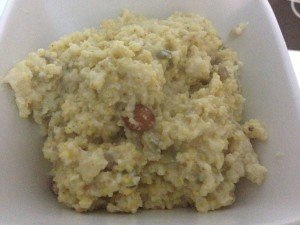
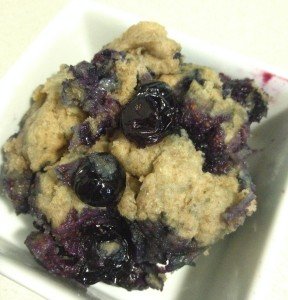
Quinoa is also a seed, that contains essential vitamins and minerals such as iron, B-vitamins, magnesium, phosphorus, potassium, calcium, vitamin E and fiber. Quinoa is also a complete protein source, which makes it wonderful for vegans, and vegetarians. Quinoa is gluten and grain free and is perfect for gluten and wheat sensitive people. Quinoa is perfect for people with type 2 diabetes, high blood pressure, colon cancer, obesity, and cardiovascular disease.
Quinoa has the best protein to carb ratio as in just 100g serve of quinoa contains: 368 calories, 64g carbs, 7g fibre, 14g protein, and 6g of Fats.
According to Medical News Today Most of the fats in quinoa are from essential oleic acid, a heart-healthy monounsaturated fat, and about 8% comes in the form of alpha-linolenic acid (ALA), and the omega-3 fatty acid most commonly found in plants.
A recommended serving size is ½ cup of cooked quinoa and that contains just 114 calories, 21g carbs, 1.8g fibre, 4g protein, 1.77g fat.
Quinoa is best replacement for rice, and so that means you can use it in almost anything you would use rice for. There are many popular quinoa dishes to make, but keep in mind ½ cup cooked is a well balanced portion size.
Quinoa is also great grounded into a flour to make delicious quinoa muffins or even pizza bases.
Quinoa can be added to soups, smoothies, sushi rolls, stir-fries and even enjoyed on its on as part of a quick pre-workout meal.
Quinoa can be made in bulk in advance by using a rice cooker. It takes just 20 minutes. Simply add 1 cup of quinoa and 2 cups of water! Quinoa can be enjoyed in a sweet or savoury context.
Amaranth
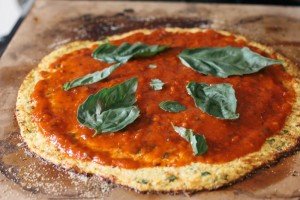
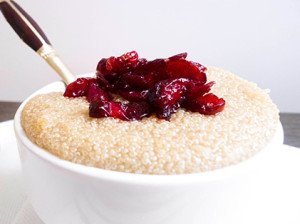
Amaranth is just like quinoa. It contains very similar benefits and so it is also a seed, that contains essential vitamins and minerals such as iron, magnesium, phosphorus, potassium, calcium, and fiber. Amaranth is completely grain free and gluten free, which is great for people avoiding grains and who are sensitive to wheat and gluten. Amaranth also contains high amounts of lysine, an amino acid found in low quantities of other grains, which makes it extra special.
Amaranth is very beneficial for people with high cholesterol as according to an American study done in 1996 the oil found in amaranth could lower total LDL Cholesterol (bad Cholesterol)
Unfortunately unlike quinoa, it’s not a complete protein source as it’s missing two essential amino acids. Nevertheless it’s still a wonderful source of carbohydrates.
Amaranth contains just: 371 calories, 65g carbs, 7g fibre, 1.7g sugar, 14g protein, and 7g of Fats.
Very similar to quinoa most of the fats in Amaranth are from essential oleic acid, and omega 3 fatty acids. These fats are essential for optimal health!
A recommended serving size is ½ cup of cooked Amaranth and that contains just 125.5 calories, 23g carbs, 2.5g fibre, 4.5g protein, 2g fat.
Amaranth is an excellent couscous replacement, and so would taste wonderful with middle eastern flavours that include turmeric, cumin, pumpkin seeds, roasted almonds and fresh dates, cooked in a veggie/chicken stock.
Amaranth is also an excellent replacement for oatmeal in the morning, and also added to soups for a delicious thicken texture and to breakfast smoothies.
Amaranth is also enjoyed in a sweet context and so it’s taste great when made into an Amaranth pudding, or delicious Gluten free cookies.
You can also use Amaranth flour in gluten free baking recipes for extra health benefits!
Amaranth can be made in bulk in advance by using a rice cooker. It takes just 20 minutes. Simply add 1 cup of Amaranth and 3 cups of water! Amaranth can be enjoyed in a sweet or savoury context
Chia Seeds
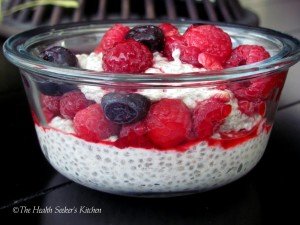
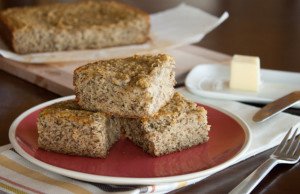
I bet you never really thought about counting chia seeds as a carb source and if you haven’t then I think you should! You see in just 100g of chia seeds you’re getting 48g of carbs, 31g fat, 34g fibre, and 17g protein. That’s amazing! And yes they are an excellent carb source especially when used in place of traditional flours and cereals in baking, breakfast puddings, and smoothies.
Chia seeds are extremely beneficial for anyone wanting to lose weight, people with high blood pressure, anyone with diabetes or cardiovascular disease, as well as heart disease!
Chia seeds contain truckloads of essential vitamins and minerals such as
According to Medical News Today, eating one ounce (28g) of chia seeds per day would provide 18% of daily calcium needs, 27% of phosphorus, 30% of manganese and smaller amounts of potassium, zinc and copper.
Chia seeds are best consumed “gelled”. To make it in bulk soak ⅓ cup of chia seeds in 2 cups of water and allow to sit for 10-60 minutes in the fridge for the best gelling outcome!
What are your primary sources of carbohydrates?
My primary carbohydrates source come from lentils, chia seeds, butternut squash and carrots, chia seeds, quinoa, buckwheat, coconut flour, and on occasions fruit.